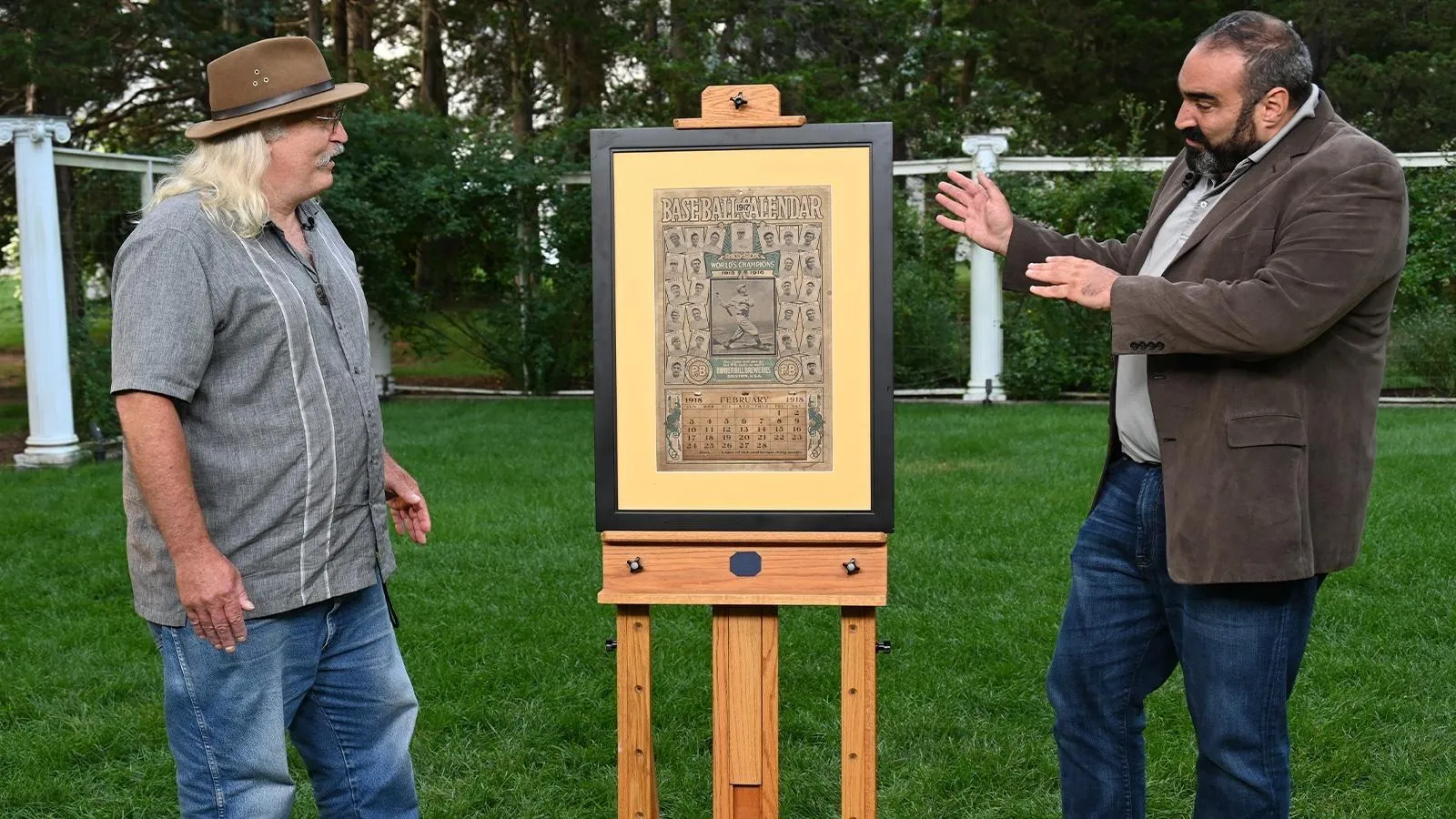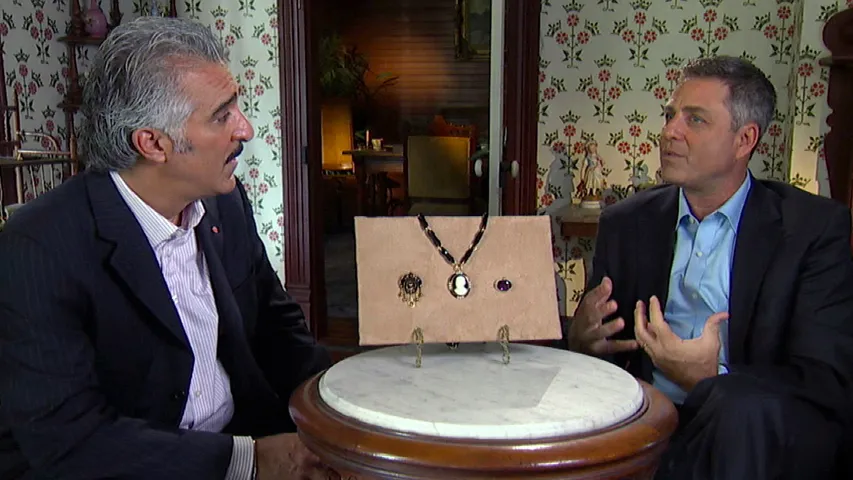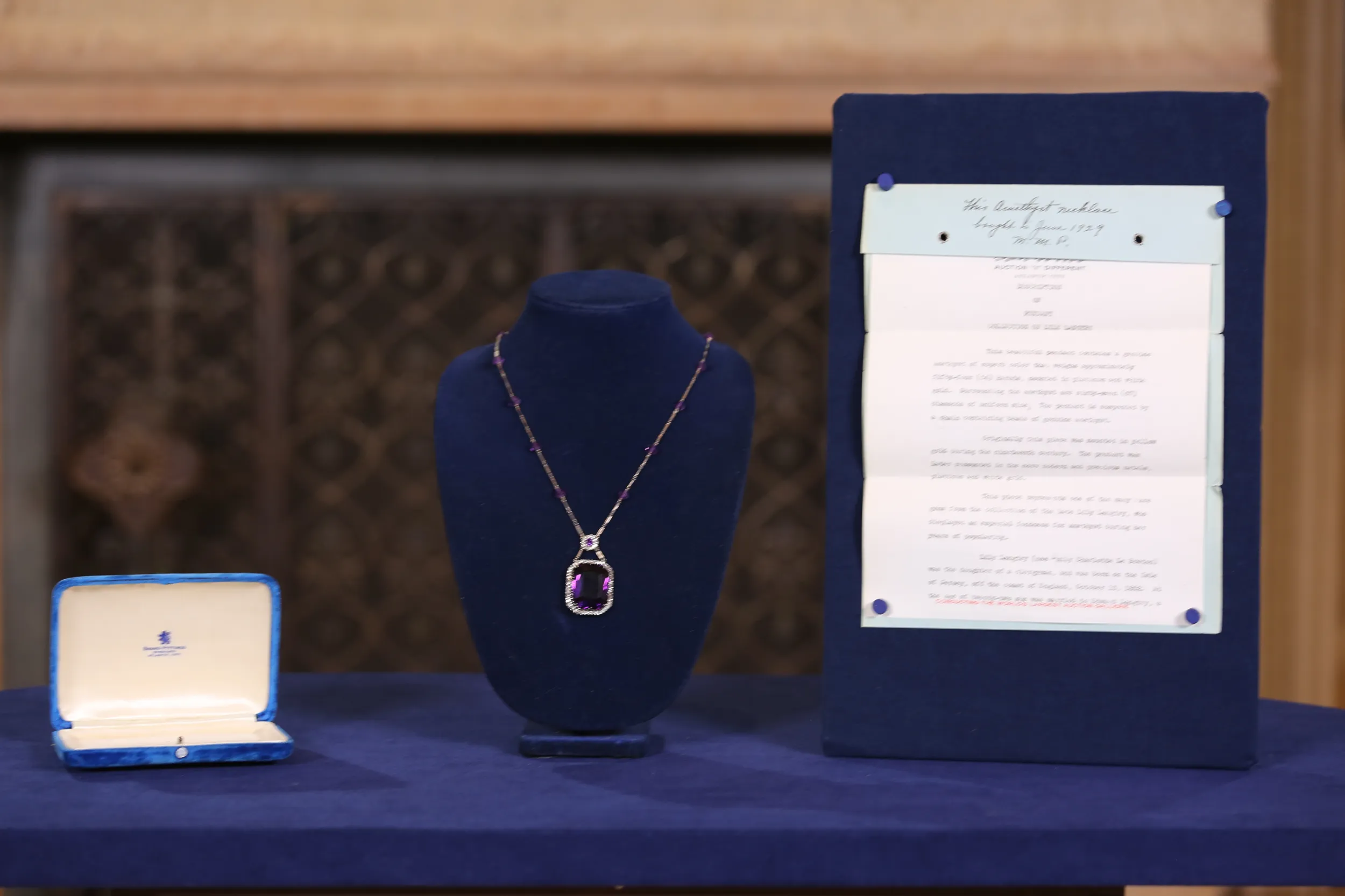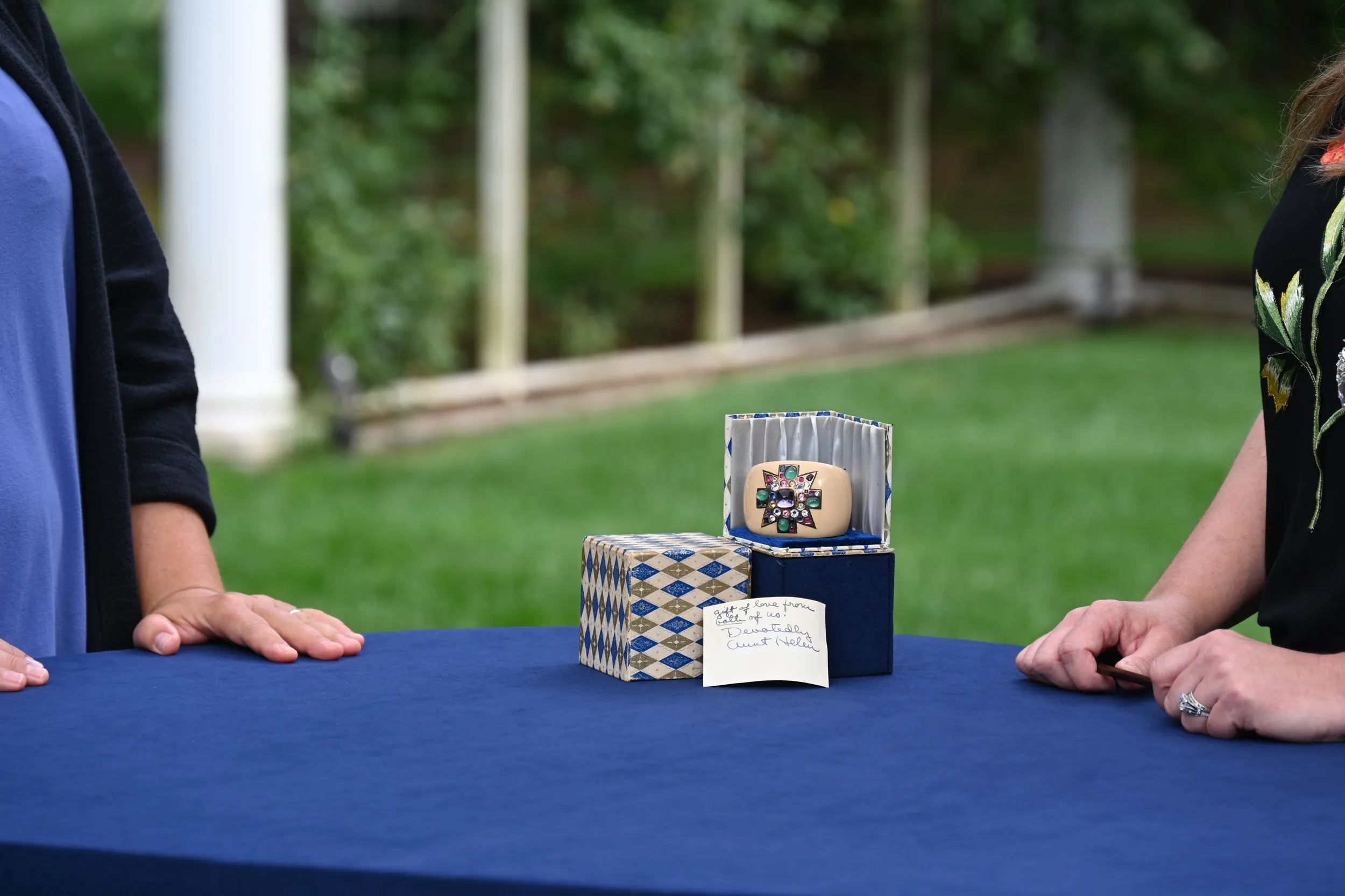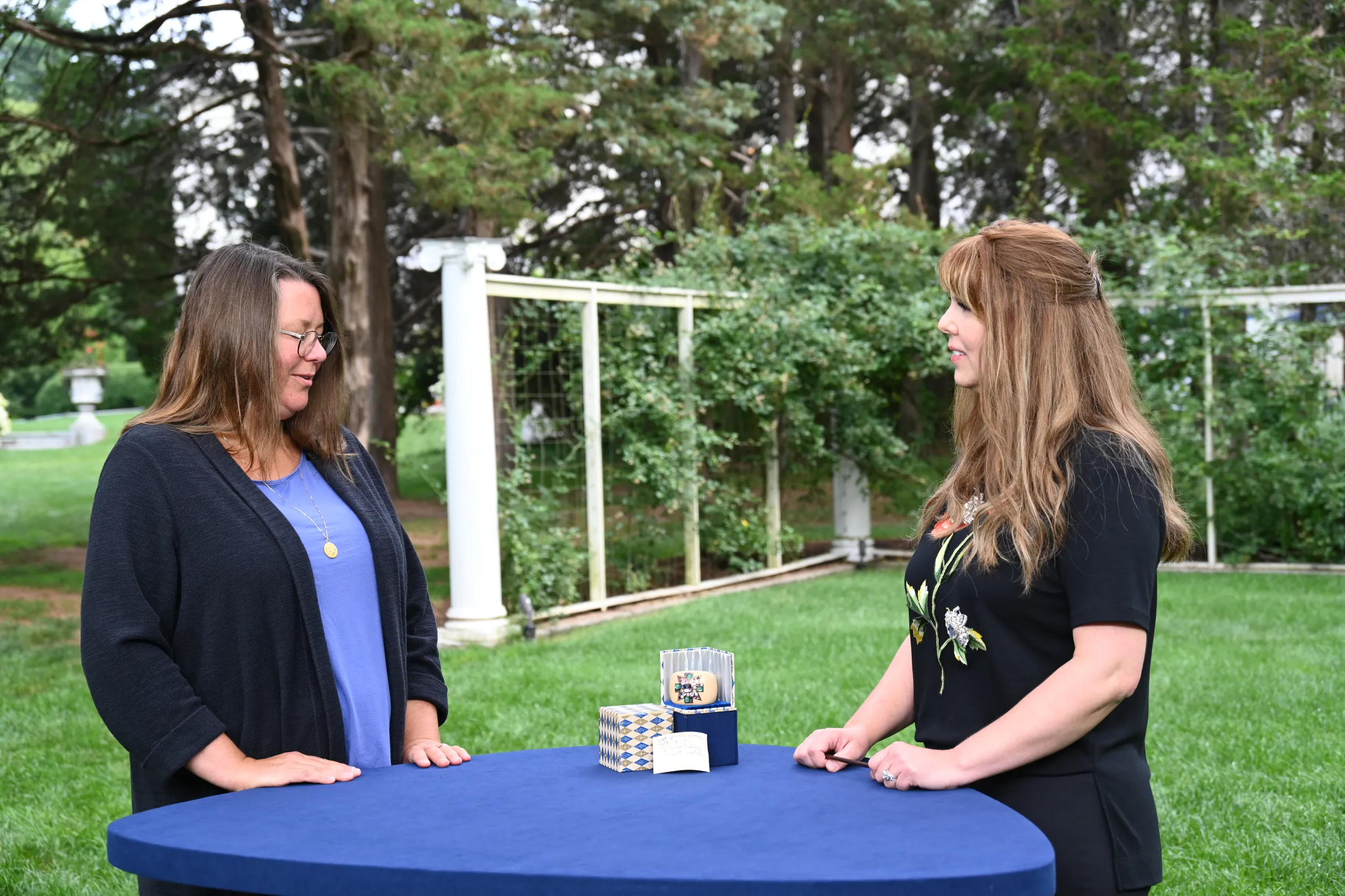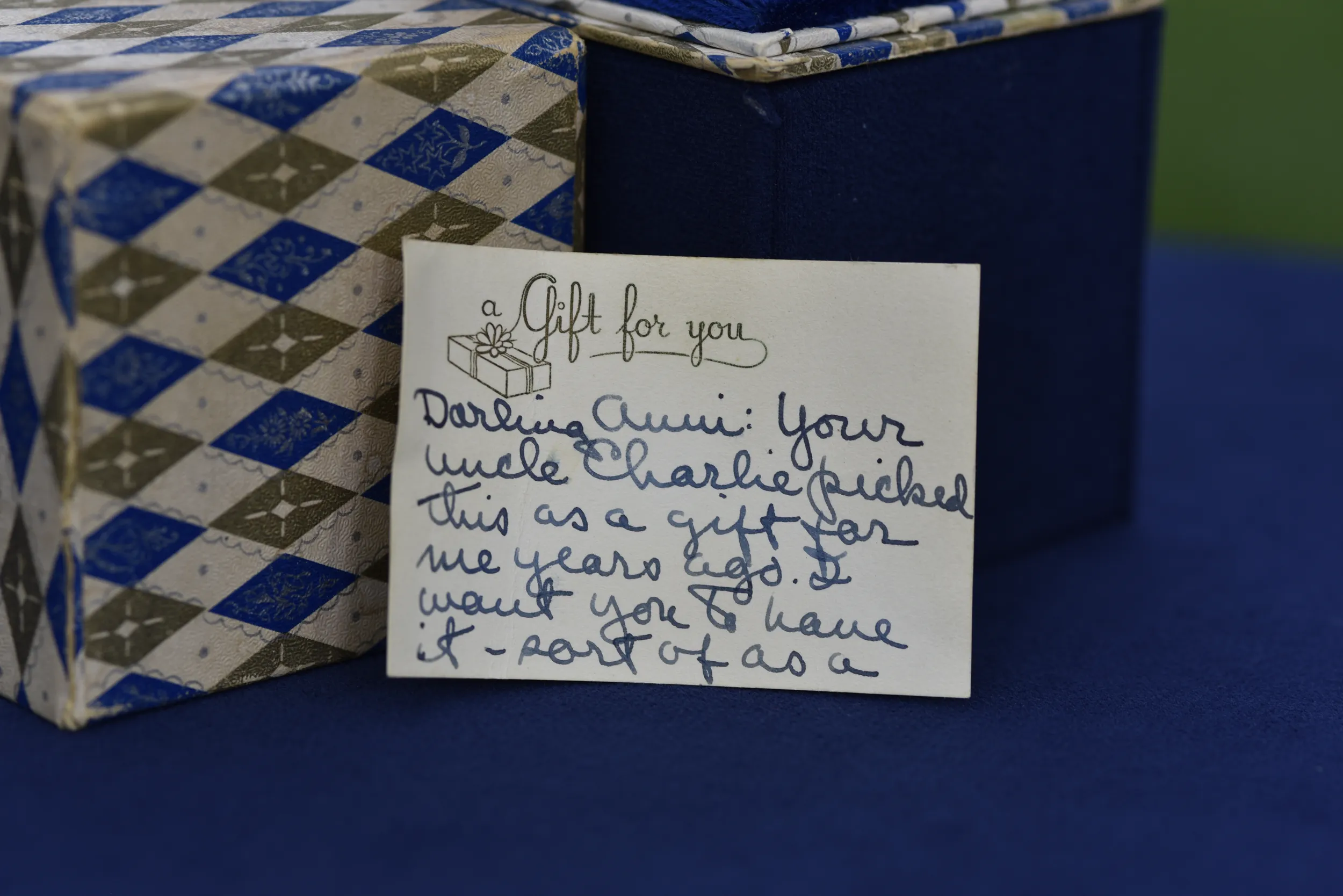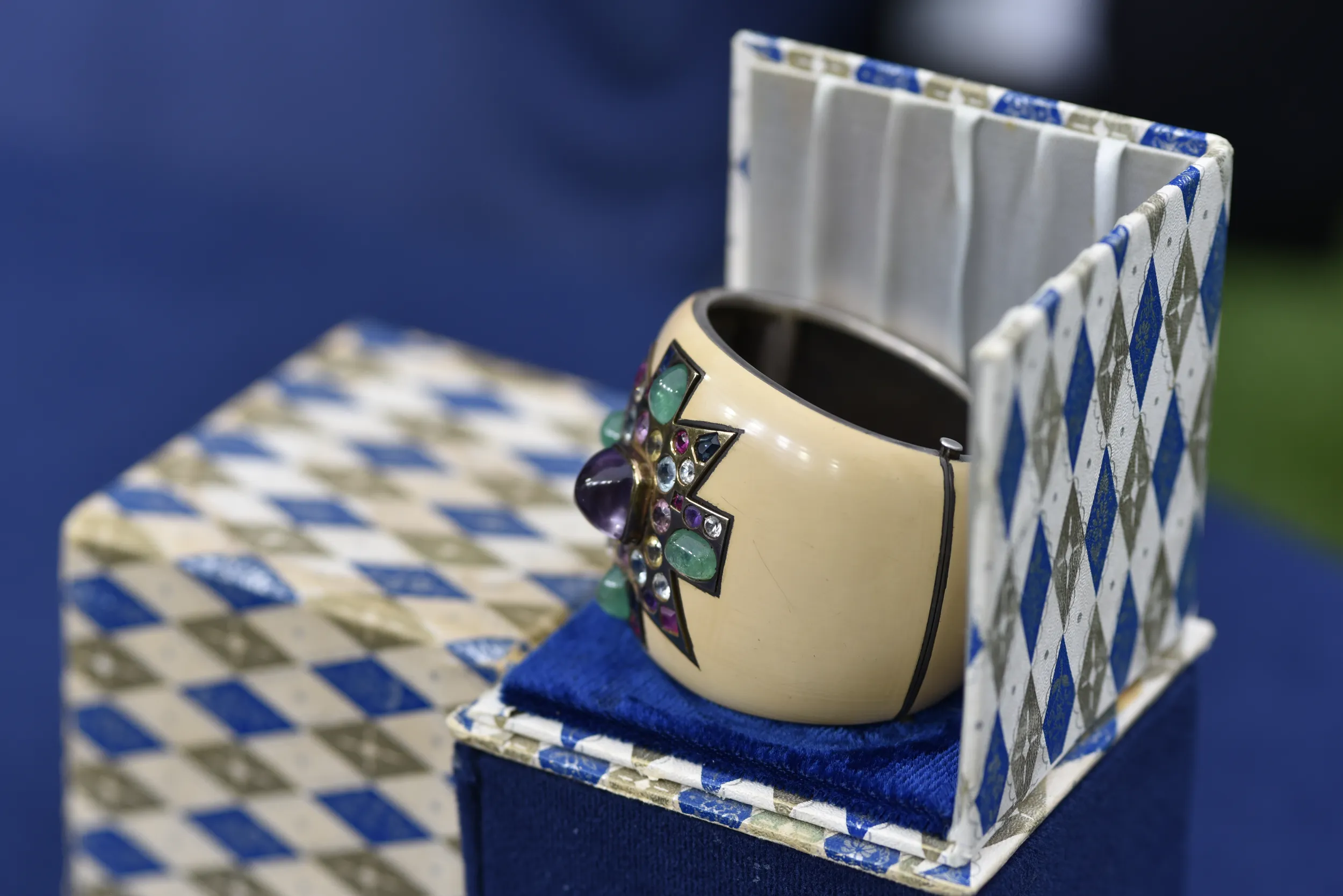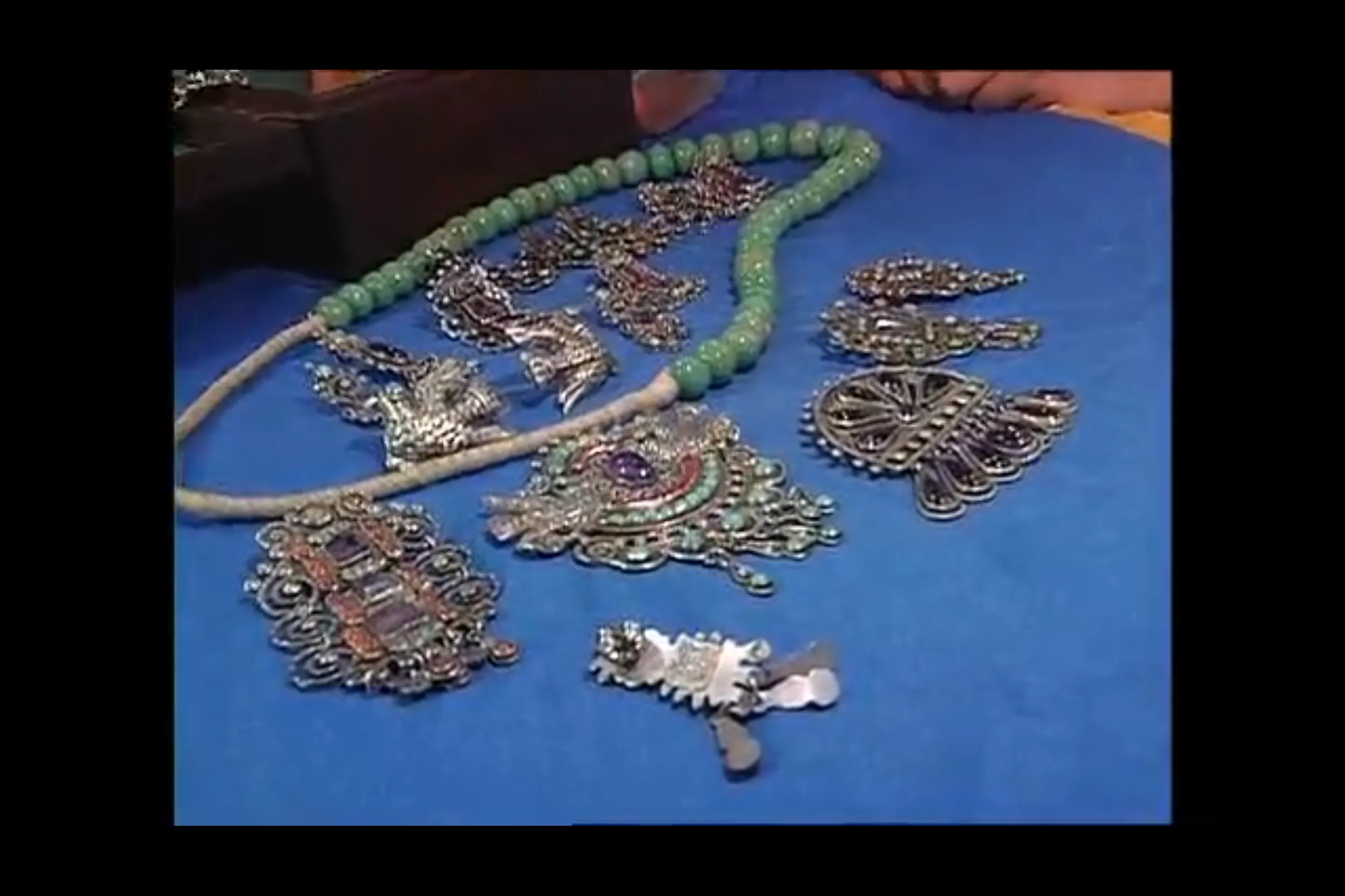GUEST: Well, my mother gave it to me uh as a wedding present about 20 years ago. And before that, it had been a gift to my mother from her great-aunt Helen Hayes. And there's this wonderful gift card, I guess, that she put with it.
Yes. Why don't you read how she...
GUEST: So my mother's name is Anni, and she says, "Darling Anni: Your Uncle Charlie picked this as a gift for me years ago. I want you to have it-- sort of as a gift of love from both of us. Devotedly, Aunt Helen."
APPRAISER: What do you know about it?
GUEST: I know almost nothing about it. I had a friend who sort of intimated that it was costume jewelry and the stones were glass. And then I showed someone a photograph of it and he said, "Well, you know, those stones, I think they're real, and I'll give you $1,000 for it." And I said, "It's a family heirloom. I don't think I'd sell it for $1,000."
APPRAISER: Yeah, I wouldn't, either, because you can't just go out and buy another one...
GUEST: Right.
...that's from your family, from Helen Hayes, who is the First Lady of the American Theater.
GUEST: Yes.
APPRAISER: She was such a rock star in the entertainment world, with such a long career that
spanned over 80 years. And she was one of the earliest people to achieve the EGOT, as we call it these days...
GUEST: Mm-hmm.
APPRAISER: ...which is winning an Emmy, a Grammy, an Oscar, and a Tony.
GUEST: Yeah, yeah.
APPRAISER: What's interesting is, the little that you know about it, which is that it was a gift from her husband, Charlie...
GUEST: Mm-hmm.
APPRAISER: ...was enough for us to start to build the case of what this is.
GUEST: Mm-hmm.
APPRAISER: Because it's not signed. And when we start to look at the history of this piece, we think, okay, so she married Charlie MacArthur, who was a journalist and a writer...
GUEST: Mm-hmm.
APPRAISER: ...in 1928. And Charlie died in 1956.
GUEST: Mm-hmm.
APPRAISER: We also know that this is a design that was quite famous in the '30s because-- this is a very long name-- Fulco Santostefano della Cerda, duke of Verdura, was the designer who started working with Chanel in 1927 as a textile designer. And she liked his, his look and his designs, and Chanel put him to work to help her redesign her jewelry line. And so he famously, one of the first pieces he made for her was a pair of Maltese cross bracelets...
GUEST: Mm-hmm.
APPRAISER: ...that looked just like this...
GUEST: Mm-hmm.
APPRAISER: ...that were done in enamel.
APPRAISER: And she wore them, one on each wrist, and there are a lot of very famous portraits of Coco Chanel wearing these Verdura-designed cuffs.
GUEST: Mm-hmm.
APPRAISER: In the mid-'30s, he actually left and went to Hollywood, and began working with other designers. So it was a short collaboration.
GUEST: Uh-huh.
APPRAISER: But it was one that bore out one of the most iconic pieces of jewelry...
GUEST: Mm-hmm.
APPRAISER: ...that's ever been created in the 20th century. He went on to found his own jewelry name, which is still around today, and they're still making the Maltese cross. Chanel still uses the Maltese cross design. In the '30s, Chanel didn't really sign their pieces.
GUEST: Mm-hmm.
APPRAISER: And they shuttered their doors in Paris during the war.
GUEST: Mm-hmm.
APPRAISER: And they didn't really get into full production again until the 1950s.
GUEST: Mm-hmm.
APPRAISER: By that time, your Uncle Charlie had soon passed. So it is most likely that he bought this for her...
GUEST: Mm-hmm.
APPRAISER: ...in the '30s. Which fits perfectly with all of the dates that you would need to have an unsigned Chanel piece from the '30s.
GUEST: Mm-hmm.
APPRAISER: What's also interesting is that coming out of the Great Depression, women only wore fine jewelry for a very long time.
GUEST: Mm-hmm.
APPRAISER: It was considered kind of déclassé and cheap and vulgar to wear costume jewelry. But she felt that jewelry was not meant to just show off the wealth of a person.
GUEST: Mm-hmm.
APPRAISER: That it was meant to adorn their outfit, and that's really how she used jewelry. Um, she very much intermixed fine and costume jewelry back and forth.
GUEST: Mm-hmm.
APPRAISER: The costume pieces from the 1930s are so rare, when they do come up for auction, the costume jewelry collectors go crazy for them.
GUEST: Mm-hmm.
APPRAISER: Um, in 2016, a Verdura for Chanel bracelet that was enamel-- a different design, not the iconic Maltese cross-- with all faux stones that was actually Coco Chanel's came up for auction...
GUEST: Mm-hmm.
APPRAISER: ...with a $25,000 to $35,000 estimate...
GUEST: Wow.
APPRAISER: ...and it sold for $100,000.
GUEST: Goodness.
APPRAISER: Now, the story with yours is, yours is actually all real.
GUEST: Mm.
APPRAISER: This is sterling silver with ivory-colored enamel. This is actually yellow gold, the Maltese cross. You have cabochon emeralds. We have a sugarloaf amethyst, aquamarines, sapphires, diamonds, rubies. To say that this is a rare piece is an understatement. It's quite possible that your Aunt Helen may have actually known or run into or met Coco Chanel at some point.
GUEST: Mm-hmm.
APPRAISER: Coco was hired by Sam Goldwyn to come to the United States in the 1930s.
GUEST: Mm-hmm.
APPRAISER: He wanted her to dress the ladies of United Artists. She actually is credited with doing some costume designs for two films at that time, in 1931 and 1932. Helen actually did a film called Arrowsmith for United Artists in 1931. So having the provenance...
GUEST: Mm-hmm.
APPRAISER: Being as rare as it is, from the 1930s...
GUEST: Mm-hmm.
APPRAISER: And having all real stones, we think a very conservative auction estimate would be at least $100,000 to $150,000.
GUEST: Goodness. Oh, my word. What a treasure. What a treasure. And to think it's been to my third grade show-and-tell class. (laughing) When I was a little girl, it
was... My mother would take it out. And it was as if I were handling something from a pirate's treasure chest. And you brought that feeling back to me today.
APPRAISER: I couldn't be happier, because this is probably one of my favorite things I've ever done on the ROADSHOW.

